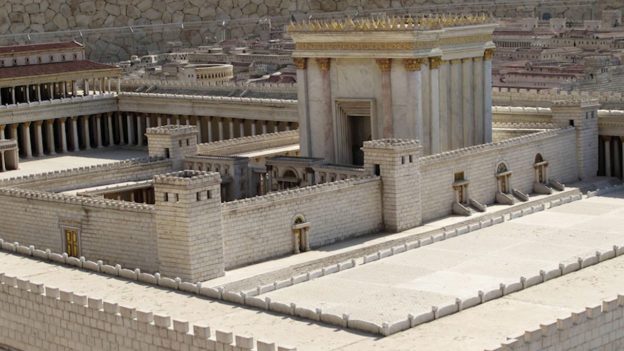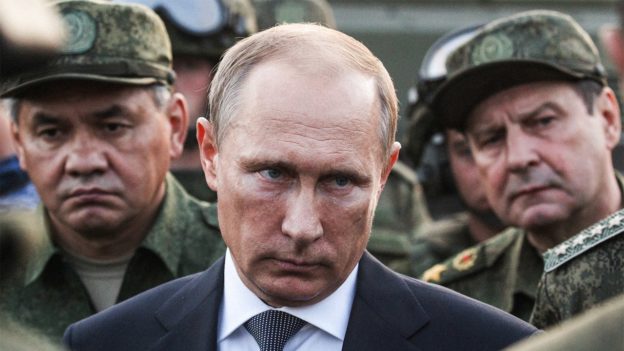Thoughts of consequence can sometimes arise from the most mundane experiences, even a headache.Opening the medicine cabinet one day, I was struck by a sticker on a prescription container.
“Not for use by pregnant women,” it read.
“And why not?” part of my aching head wondered.
Because, another part answered, a fetus is so much more sensitive to the effects of chemicals than a more developed person. Partly, of course, because of its very tininess, but more importantly because it is an explosively, developing thing. While a single cell is growing to a many-billions-of-unbelievably-variegated-cells organism in a matter of mere months it is easily and greatly affected by even subtle stimuli.
Which thought led, slowly but inexorably, to others, about the creation of the world – the subject, soon, of the parshas hashovua – and about the beginning of a new Jewish year.
“The Butterfly Effect” is the whimsical name science writers give to the concept of “sensitive dependence on initial conditions” – the idea that beginnings are unusually important. A diversion of a single degree of arc where the arrow leaves the bow – or an error of a single digit at the beginning of a long calculation – can yield a difference of miles, or millions, in the end. For all we know, the flapping of a butterfly’s wings halfway around the world yesterday might have set into motion a hurricane in the Atlantic today.
The most striking butterfly effects take place during formative stages, when much is transpiring with particular rapidity. Thus, the label on the medication; the gestation of a fetus, that single cell’s incredible journey toward personhood, is strikingly responsive to so much of what its mother does, eats and drinks. The developing child is exquisitely sensitive to even the most otherwise innocent chemicals because beginnings are formative, hence crucial, times.
Leaving the realm of the microcosm, our world itself also had a gestation period, six days’ worth. Interestingly, just as the initial developmental stage of a child takes place beyond our observation, so did that of the world itself. The event and processes of those days are entirely hidden from us, the Torah supplying only the most inscrutable generalities about what actually took place then. Thus, Chazal applied the posuk “the honor of Hashem is the concealment of the thing” (Mishlei, 25:2) to the days of creation. Honest scientists admit the same. E.A. Milne, a celebrated British astronomer, wrote “In the divine act of creation, G-d is unobserved and unwitnessed.”
Despite our inability, however, to truly know anything about the happenings of the creation week, to think of those days as a gestational time is enlightening. It may even help explain the apparent discrepancy between what we know from the Torah is the true age of the earth and what the geological and paleontological evidence seem to say
Consider: What would happen if the age of an adult human since hisconception were being inferred by a scientist from Alpha Centauri, using only knowledge he has of the human’s present rate of growth and development? In other words, if our alien professor knew only that the individual standing before it developed from a single cell, and saw only the relatively plodding rate of growth currently evident in his subject, he would have no choice but to conclude that the 30-year-old human was, in truth, fantastically old. What the Alpha Centurion is missing, of course, is an awareness of the specialized nature of the gestational stage of life, the powerful, pregnant period before birth, with its rapid, astounding and unparalleled rate of development.
If we recognize that a similar gestational stage existed for the universe as a whole at its creation – and the Torah tells us to do precisely that – then it is only reasonable to expect that formative stage to evidence a similarly accelerated rate of development, with the results on the first Shabbos seeming in every detectable way to reflect millions of years of development, eons that occurred entirely within the six days of the world’s explosive, embryonic growth.
Rosh Hashana is called “the birthday of the world.” But the Hebrew word there translated as “birth of” – haras – really refers to the process of conception/gestation. And so, annually, at the start of the Jewish year, it seems in some way we relive the gestational days of creation. But more: those days are formative ones, the development period for the year that is to follow. Beginning with the “conception-day” of Rosh Hashana itself and continuing until Yom Kippur, the period of the early new Jewish year is to each year what the creation-week was to the world of our experience: a formative stage.
All of which may well lend some insight into a puzzling halacha.
We are instructed by the Shulchan Aruch to conduct ourselves in a particularly exemplary manner at the start of a new Jewish year. We are cautioned to avoid anger on Rosh Hashana itself. And for each year’s first ten days, we are encouraged to avoid eating even technically kosher foods that present other, less serious, problems (like kosher bread baked by a non-Jewish manufacturer), and to generally conduct ourselves, especially interpersonally, in a more careful manner than during the rest of the year.
It is a strange halacha. What is the point of pretending to a higher level of observance or refinement of personality when one may have no intention at all of maintaining those things beyond the week?
Might it be, though, that things not greatly significant under normal circumstances suddenly take on pointed importance during the year’s first week, because those days have their analogue in the concept of gestation?
Might those days, in other words, be particularly sensitive to minor influences because they are the days from which the coming year will develop?
Observance and good conduct are always in season, but our mesora teaches us that they have particular power during Rosh Hashana and the Aseres Yimei Teshuvah – that we should regard these days with the very same vigilance and care an expectant mother has for the rapidly developing, exquisitely sensitive being within her.
Let us seize the days and cherish them; they are conceptual butterfly-wings, the first unfoldings of a new Jewish year.
© 2010 Rabbi Avi Shafran









